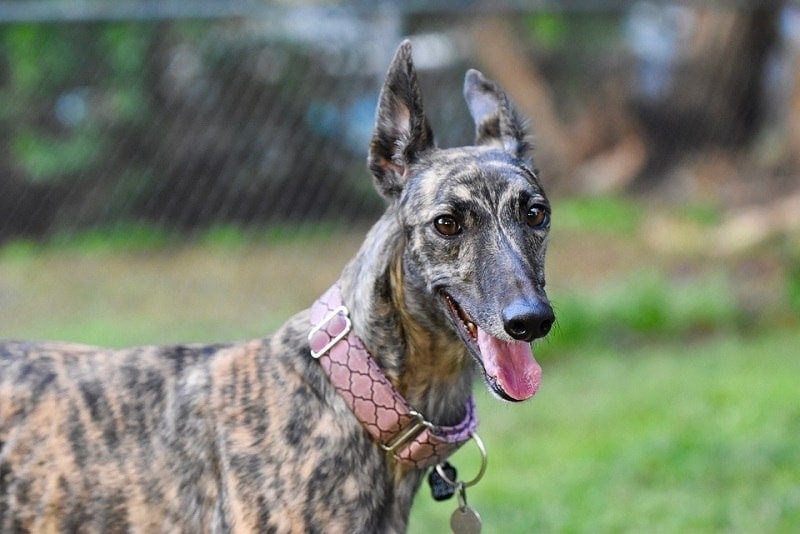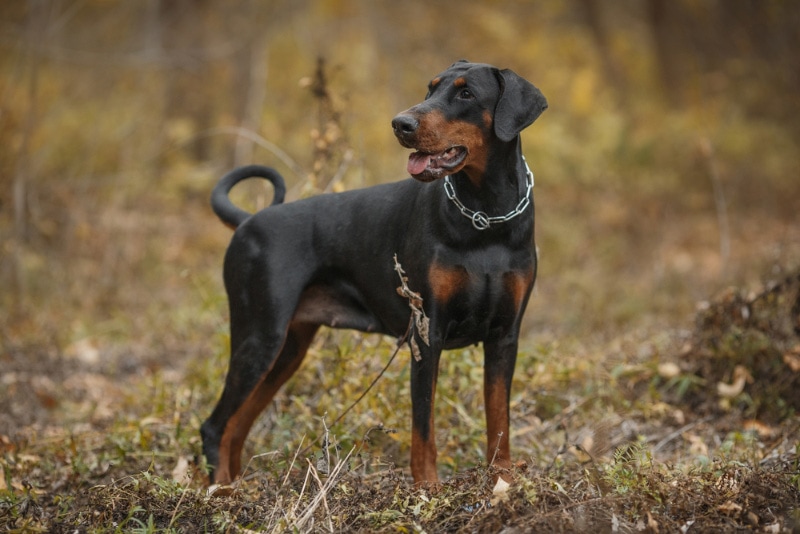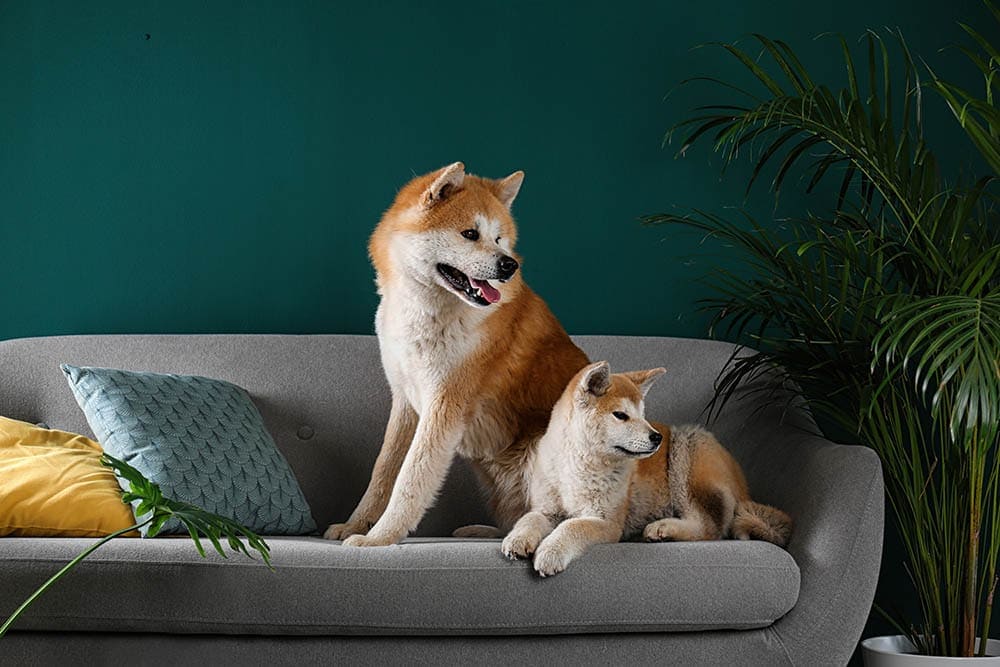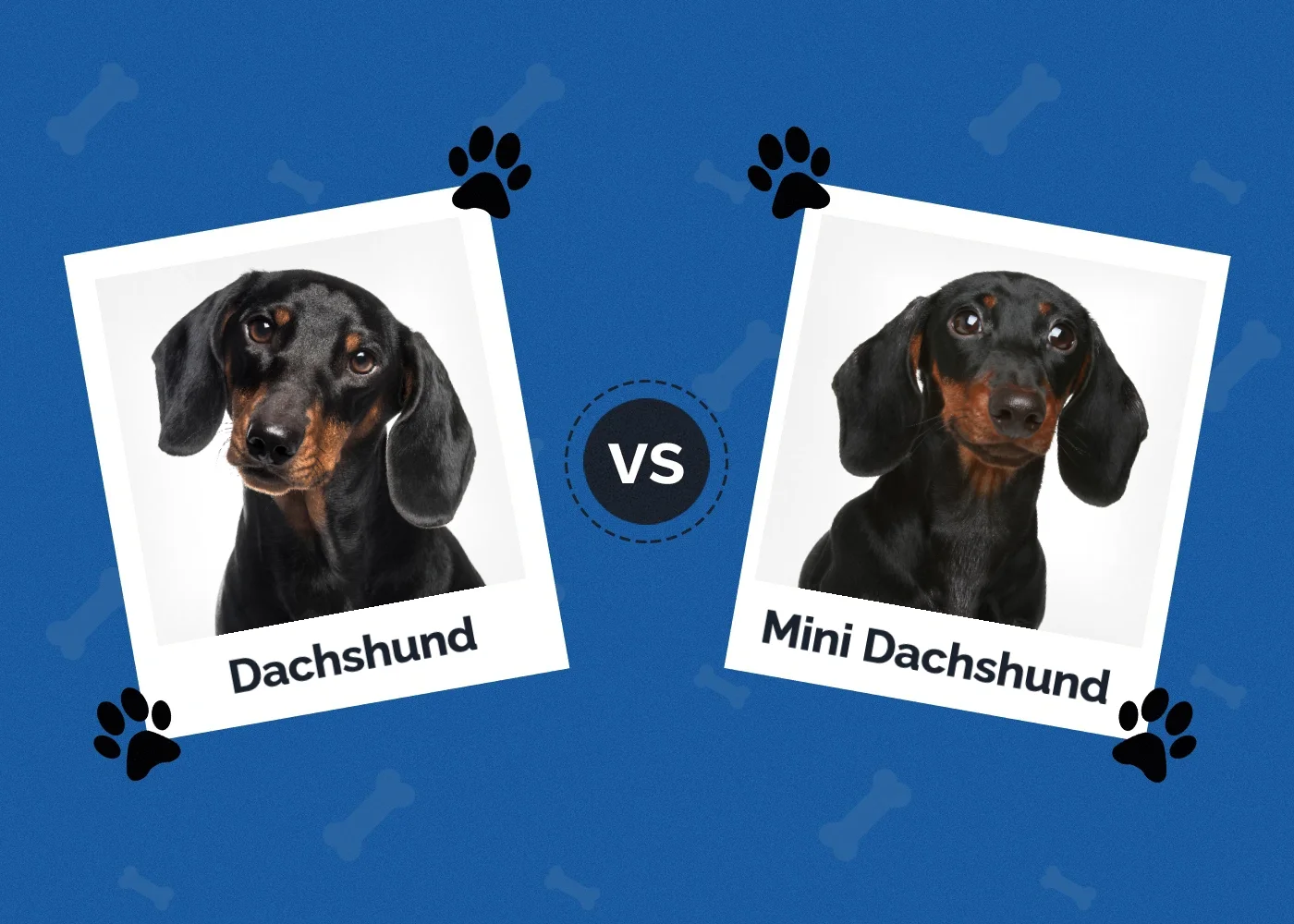Greyhound vs Great Dane: Breed Comparison (With Pictures)
By Jordyn Alger
Updated on
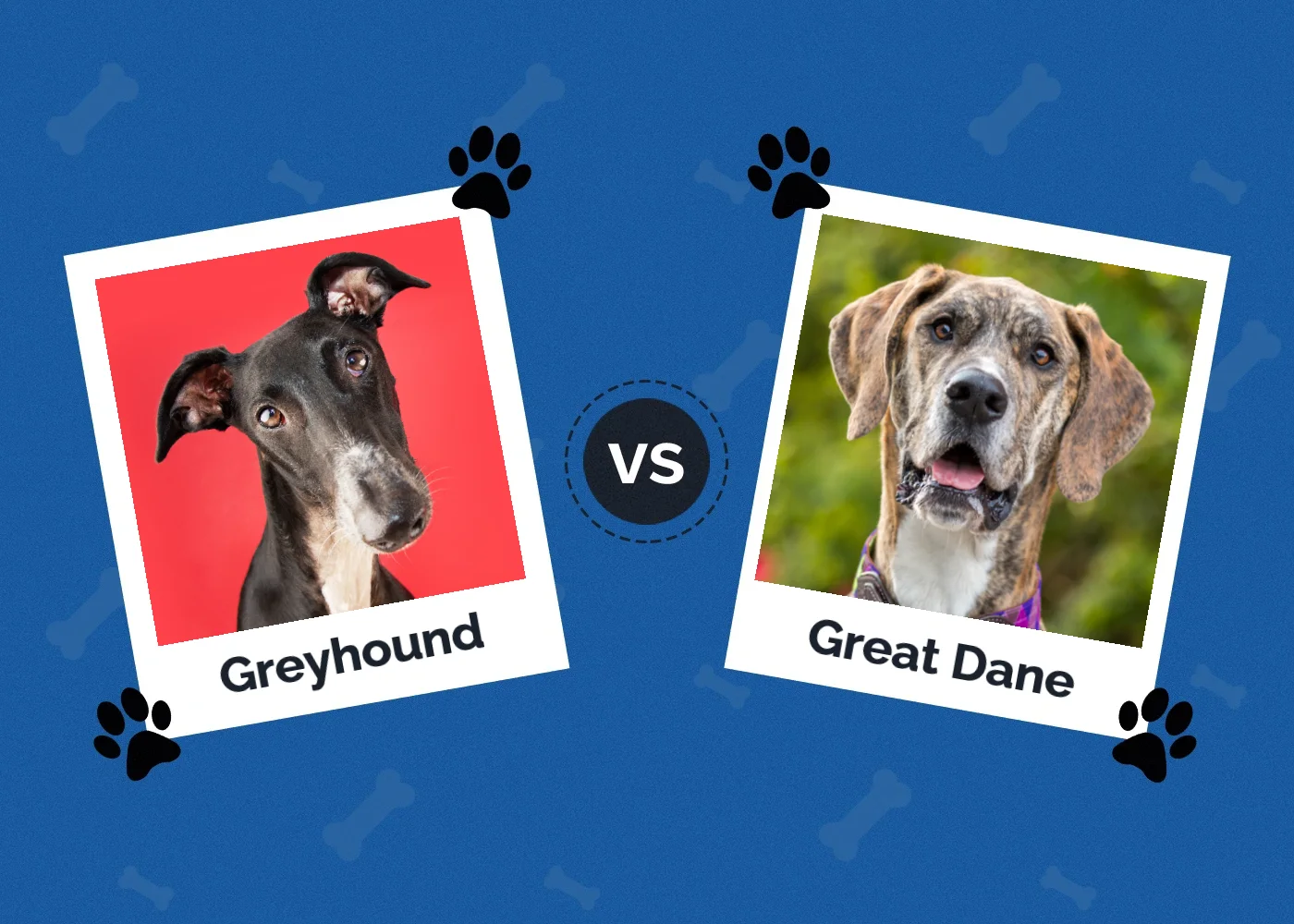
Click to Skip Ahead
Greyhounds are gentle and noble companions with bodies built for speed. Their narrow skulls, lean bodies, and powerful feet are designed for a chase, and it is not uncommon to spot this breed sprinting. The Greyhound’s build has been the source of inspiration for artists throughout the generations due to their unique and stunning beauty.
Great Danes are also known for their poise and majesty. This breed is powerful and alert, making them the perfect guardians of your home. They are protective of their families, though they are not known for being overly aggressive. In fact, they are better known for their sweet and patient temperaments, making them excellent companions for children.
If you are considering bringing one of these breeds into your home or want to learn more about them, read on …
Visual Differences
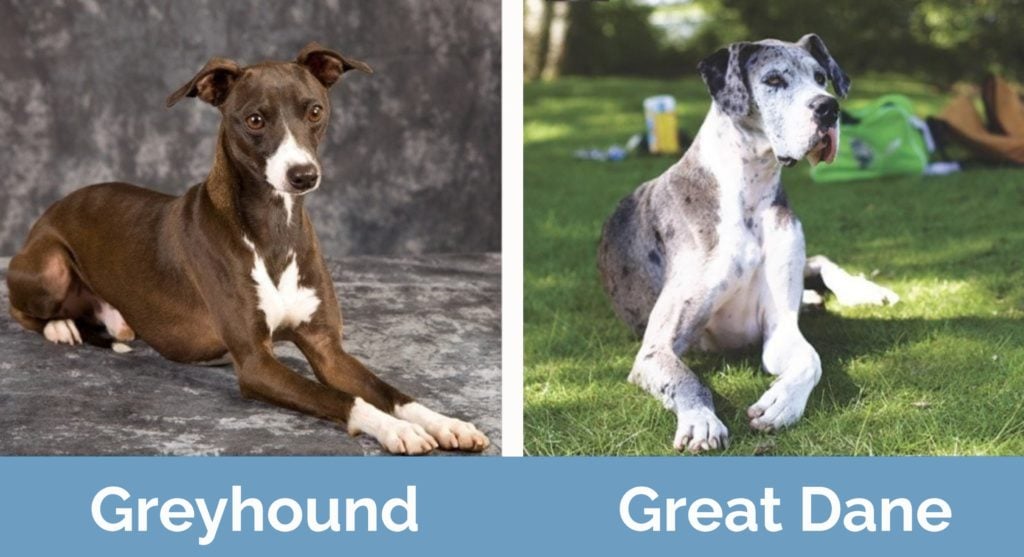
At a Glance
- Average height (adult): 28–30 inches
- Average weight (adult): 65–70 pounds
- Lifespan: 10–13 years
- Exercise: 30+ minutes per day
- Grooming needs: Low
- Family-friendly: Yes
- Other pet-friendly: Often
- Trainability: Loyal, calm, but occasionally stubborn
- Average height (adult): 30–32 inches
- Average weight (adult): 140–175 pounds
- Lifespan: 7–10 years
- Exercise: 30+ minutes per day
- Grooming needs: Moderate
- Family-friendly: Yes
- Other pet-friendly: Often
- Trainability: Loyal and easy to train
Greyhound Overview
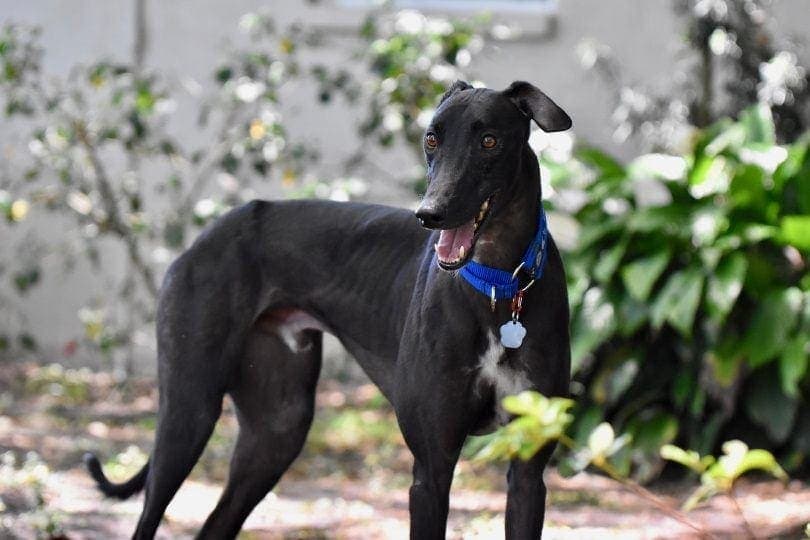
Personality / Character
Greyhounds are known for being even-tempered and calm. Although they are built for speed, they enjoy curling up on the couch and relaxing. They are affectionate with their family and good with other dogs, and they generally tolerate young children.
Though they can be independent, Greyhounds enjoy being around their loved ones. They do not enjoy being separated for prolonged periods, so if you plan on getting a Greyhound, you will want to ensure you can meet its social needs.
They are tolerant yet wary of strangers. While they are alert, they are not especially vigilant watchdogs. They are moderately playful and full of vibrant energy, so playing outside with a Greyhound is a must.
Exercise
Greyhounds love to relax around the house, but their exercise needs still need to be addressed. Greyhounds require regular activity, including scheduled times when they can sprint freely. During this free-running time, it is highly advised that you keep your Greyhound in an enclosed area, as its prey drive may become activated and cause the Greyhound to chase small animals.
Although Greyhounds are renowned runners, they are not built for long-distance jogs. They have sensitive joints and a higher risk for overheating, so exercise for a Greyhound is best utilized with brief sessions rather than prolonged periods of activity.
Training
Greyhounds are highly adaptable and can learn new tasks relatively quickly; however, they can be somewhat independent. This breed was developed to make decisions without human intervention so that they could hunt game on their own accord. This can make training them frustrating for those who are not already experienced with Greyhounds.
When training a Greyhound, short lessons are best to keep it entertained. Greyhounds are known to become bored quickly. Likewise, they need to be handled gently, as they have a sensitive disposition and do not respond well to harsh criticism.
The best way to train a Greyhound is to focus on doing tasks with the dog rather than expecting the tasks to be done alone. Greyhounds enjoy interacting with their humans, so they will be much more invested in learning if that is the case.
Health & Care
Greyhounds live approximately 10–13 years. Although this breed is generally healthy, there are some issues that they may be at higher risk of suffering from.
Arthritis is an issue that Greyhounds can develop over time, along with hip problems and other joint issues. If you notice that your dog is reluctant to move or appears to have difficulty climbing, jumping, or walking, there is a chance that arthritis or another joint issue is the cause.
There is also the possibility of heart and eye problems, though these can be harder to spot. If you ever suspect anything is amiss with your dog’s health and well-being, consult your vet immediately.
Suitable for:
Greyhounds are excellent companions for all sorts of families. A Greyhound can be the perfect addition to almost any dynamic, whether you are a family with children, other pets, or seniors. They are somewhat less advised for first-time dog owners, as they can be willful and challenging to train, and their high prey drive can make them difficult to rein in. However, for any dog owner up to the task, the Greyhound has a sweet temperament that makes the hassle of training worthwhile.
Great Dane Overview
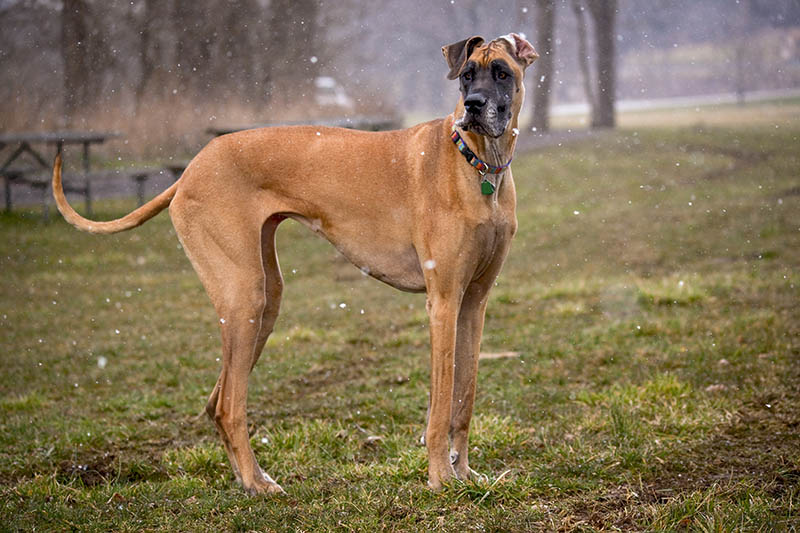
Personality / Character
Great Danes are known to be social and affectionate dogs. Though they are a large breed, they are exceptionally gentle and excellent around young children. The main concern with Great Danes and children is that the Great Dane may accidentally knock them over, so be sure to supervise all children around your dog.
While they are known as gentle giants, they are not lax about intruders. Great Danes are vigilant protectors of the home, always alert and ready to defend their families. If a stranger is welcomed into the house, they are wary but tolerant and can quickly adapt to become accepting.
Exercise
Although Great Danes are calm and do not appear to need much activity, that is not the case. Great Danes need daily exercise. A fast-paced walk twice a day is adequate.
Long walks or jogs are fine for Great Danes, but only after they have reached 2 years of age. When they are young, they are still growing, so vigorous activity is not advised. Likewise, intense exercise must be prohibited following mealtimes, or your Great Dane may develop bloat, a dangerous and possibly life-threatening condition that impacts large-breed dogs much more heavily.
Great Danes are big dogs, but that doesn’t necessarily mean they require much outdoor space. As long as their minimum exercise requirements are met, they will be satisfied. They are not overly energetic dogs.
Training
Great Danes are eager to please, though they can have a mind of their own at times as well. It is important to begin obedience training early on and socialize your Great Dane as a puppy. For such a large and powerful breed, it is important that they are well-adjusted and not easily spooked.
This breed responds well to firm yet positive training methods, but only when methods and expectations are consistent. Inconsistency will make it impossible for your Great Dane to understand expectations, making training a frustrating process for everyone involved.
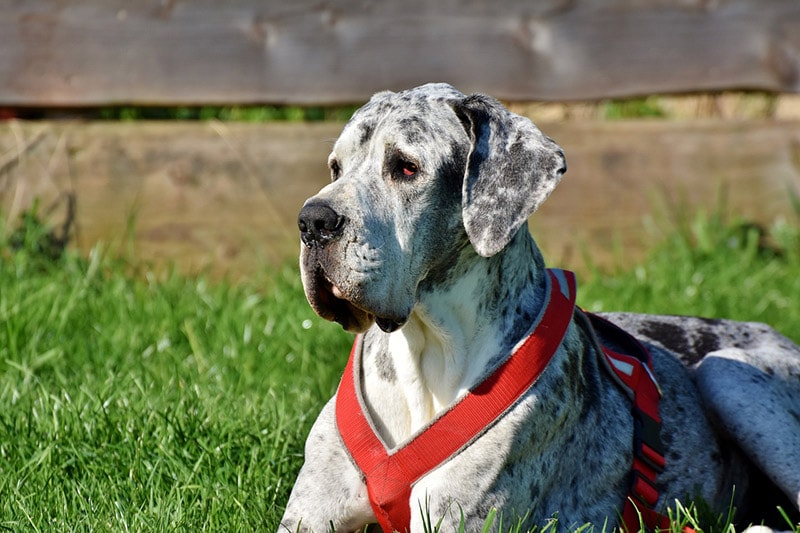
Health & Care
The lifespan of a Great Dane is somewhat short, averaging only 7–10 years. Great Danes are prone to most of the health complications that large-breed dogs are at higher risk of developing. Bloat is among those issues.
Other issues that the Great Dane may be predisposed to include eye conditions, thyroid issues, and hip dysplasia.
Suitable for:
Great Danes are gentle creatures, making them suitable for families with young children, dogs, and even cats. Still, although the temperament of the Great Dane makes it suitable for small children or animals, it is essential to supervise any interactions in case your Great Dane forgets its size and accidentally bumps into someone or something.
Which Breed Is Right for You?
Greyhounds and Great Danes are known for their grace and elegance, though their majesty comes in vastly different forms. The Greyhound is sleek, lean, and fast, while the Great Dane is large and powerful. Both breeds are content with cuddling on the couch, but they each need regular exercise.
However, there are some notable differences. The Greyhound can be a bit more independent, making training a more complicated matter, and the Great Dane has a somewhat short lifespan.
Regardless, both breeds have excellent qualities that make them perfect pets for practically any family. No matter your family dynamic, the Greyhound or the Great Dane could be the ideal match for you.
Featured Image Credit: Left – smrm1977, Shutterstock | Right – Tara Lynn and Co, Shutterstock


